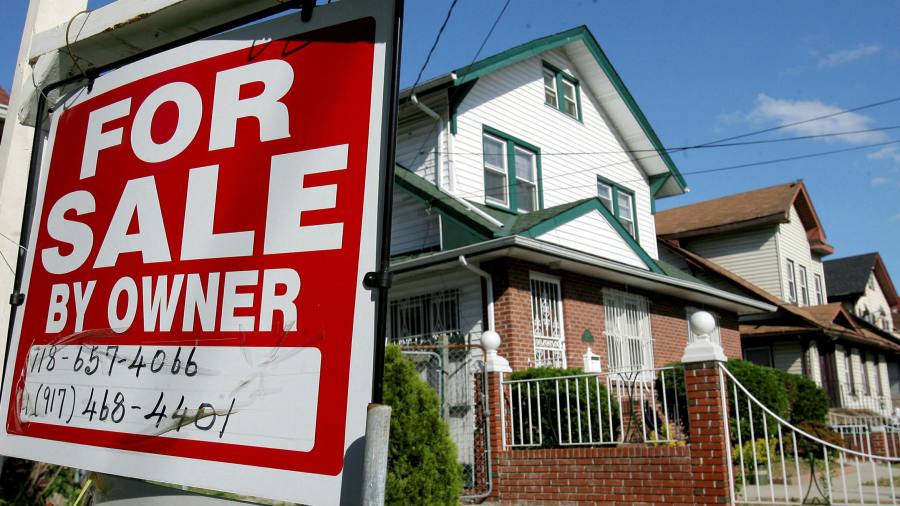The average interest rate on a 30-year fixed-rate mortgage in the US has fallen below 3 per cent for the first time ever, mortgage finance company Freddie Mac said on Thursday.
The historic figure reflects how policy responses to the coronavirus pandemic have brought down borrowing costs, helping drive a recovery in the US housing market even as other parts of the economy face a more uncertain recovery.
The fresh low of 2.98 per cent — below anything on records dating back to 1971 — was down from 3.03 per cent the previous week.
Doug Duncan, chief economist at Freddie Mac’s sister company, Fannie Mae, said that given the big drop in US Treasury yields, mortgage rates had more room to fall. “A two-and-three-quarters [per cent] mortgage is possible next year,” he said.
The reason rates have not fallen faster is that the demand for mortgage refinancing has overwhelmed the ability of lenders to originate new loans, according to Mr Duncan.
“There is no point in lowering prices to gain business you can’t close anyway,” he said.
The availability of long-term fixed rate mortgages in the US is underpinned by the activities of Fannie Mae and Freddie Mac, which parcel them into bonds for sale to investors, providing them with a government guarantee that can make them as attractive as US Treasuries.
Walt Schmidt, head of mortgage strategy at FHN Financial, agreed that rates could go lower, but pointed out that the average mortgage rate obscures an unusually wide range of rates available, depending on individual borrower’s credit history.
“There have been a lot of borrowers who have gotten two-handle [under 3 per cent] mortgages for a couple of months now,” Mr Schmidt said. “It is like past crises, in that those who don’t need financing can get it, and those that need it cannot.”
Mortgage lenders are very leery of borrowers with credit blemishes, fearing that they could go into payment forbearance after securing a new mortgage. Recent federal legislation designed to ease the economic effects of coronavirus forces lenders to give customers payment holidays if they are struggling.
The latest mortgage rate figures on Thursday came alongside data that showed US homebuilder confidence in July had returned to levels seen before the pandemic hit.
The National Association of Home Builders’ housing market index climbed to 72 in July from 58 the previous month. That exceeded economists’ forecasts for a reading of 60, according to a Reuters survey, and matched its reading in March.
“Builders are seeing strong traffic and lots of interest in new construction as existing home inventory remains lean,” said NAHB Chairman Chuck Fowke. “Low interest rates are also fuelling demand, and we expect housing to lead an overall economic recovery,” he added.
Economists have pointed out that one of the reasons the housing market has recovered quickly is because pandemic-driven job losses have disproportionately affected younger renters as opposed to would-be homebuyers.
Moreover, lower mortgage rates have made home purchases more attractive for those who have held on to their jobs.
Reverse mortgage interest rates surveyed were as low as 2.5% on an annual LIBOR adjustable and as low as 3.18% on a fixed rate. Reverse mortgage rates have an additional .5% due and payable to FHA to continue ensuring the loan.
For the latest news and updates, follow us on Google News. Also, if you like our efforts, consider sharing this story with your friends, this will encourage us to bring more exciting updates for you.
Source: https://reversemortgagereviews.org

